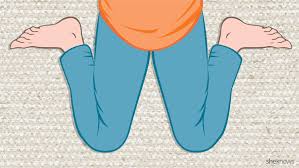By: Laura Kendall, DPT
Do your kids sit with their knees and feet out to the sides? Often in the shape of a W? W-sitting is commonly seen in children and is not recommended as a preferred sitting posture when playing on the floor. In fact, we suggest you have your child avoid this position.

Children choose to W-sit for many different reasons. Ultimately, they have more mobility in their hips at a younger age. They often choose this position because it gives them a larger base of support. This means that they don’t have to use their trunk/core to stabilize their body. W-sitting often occurs when children have poor core strength.
W-sitting prevents a child’s full physical potential while limiting the use of their core. When children are engaged in a W-sit, they are unable to fully rotate their body to reach toys located to their sides. As a result, these limitations to trunk mobility might prevent the normal development of “righting reactions” such as placing a hand on the floor to prevent falling. Sitting in this fashion often causes the muscles to become tight and can result in an “in-toed” appearance while walking. Long term W-sitting leads to poor postural control and can ultimately cause joint, back pain, and weakness into adulthood.
What can parents do:

